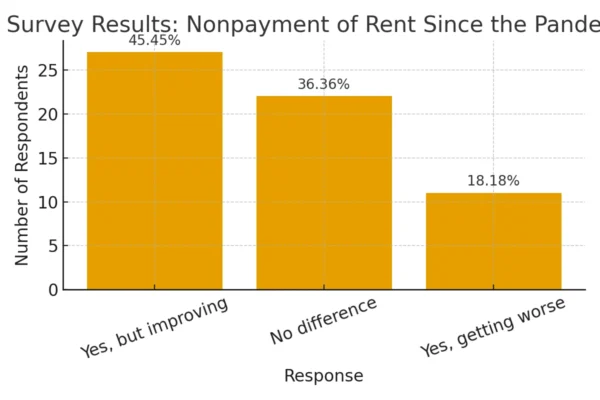Home·Property Management·What is Accelerated Depreciation for Rental Property?

What is Accelerated Depreciation for Rental Property?
In today’s competitive real estate market, understanding and taking advantage of accelerated depreciation for rental property can be a game-changer for property owners.
One way to lower your tax liabilities and generate more cash flow from rental properties is by utilizing accelerated depreciation. This concept in real estate can be used via cost segregation studies for maximizing returns on investments. Here, we will look at the benefits of this approach and how it works with regards to rentals.
Key Takeaways
-
Accelerated depreciation in real estate is a method that allows investors to claim larger deductions for property depreciation.
-
Cost segregation studies are required to take advantage of accelerated depreciation and provide rental property owners with reduced tax liability, increased cash flow, and improved return on investment.
-
Consulting a tax professional is recommended when implementing accelerated depreciation for rental properties in order to ensure compliance with IRS regulations and maximize the potential benefit.
What is Accelerated Depreciation in Real Estate
Accelerated depreciation, a tax strategy, enables property owners to secure larger deductions early in their ownership. This reflects the property’s declining value over time and reduces their tax liability.
A significant tax advantage of owning rental property is leveraging depreciation expenses to minimize the investor’s taxable net income. By implementing accelerated depreciation methods, such as obtaining a cost segregation study, landlords can separate the value of fixtures and fittings that are not integral or structural parts of the building.
Moreover, 100% bonus depreciation and Section 179 deductions allow landlords to take their depreciation deduction all at once, providing tax benefits and greater cash flow for the investor, depending on the investor’s income tax bracket.
How Accelerated Depreciation for Rental Property Front loads the Tax Advantages
Accelerated depreciation benefits investors by front-loading tax advantages, which reduces their taxable income and offsets other profits. A significant benefit of accelerated depreciation for rental property is its ability to lower the investor’s taxable net income, leading to a boost in cash flow during the early years of ownership.
However, there are potential drawbacks associated with accelerated depreciation, such as the requirement of an investor to invest in a cost segregation study to determine the components that are eligible for faster depreciation and the recapture of the benefit upon the sale of the rental property. The cost of performing a cost segregation study makes sense for almost all larger rental properties or multifamily apartment complexes.
Still, it may not make sense from a cost perspective for smaller single or duplex rental units. Determining if it’s worth forking out the cash to perform the study would be based on the value of the said property, and in general, it makes sense on properties north of a $750,000 value.
What is Cost Segregation Depreciation?
Cost segregation depreciation is a tax planning strategy that:
- Identifies and allocates personal property assets within a rental property
- Enables shorter depreciation schedules and greater tax benefits
- The useful life of personal property in cost segregation is typically 5-7 years, and can be depreciated accordingly.
The primary goal of cost segregation is to identify all costs that can depreciate over a shorter tax life than the building itself. A cost segregation study is a method that identifies and classifies personal property assets within a rental property, thereby allowing for shorter depreciation schedules and increased tax benefits.
The advantage of cost segregation is that it can decrease current income tax obligations by accelerating the depreciation time for taxation purposes.
Cost Segregation & Rental Property Accelerated Depreciation
The combination of cost segregation with accelerated depreciation can provide rental property owners with increased tax savings, thereby reducing taxable income and augmenting cash flow. The process involves:
- Hiring a 3rd party engineer to perform a cost segregation study to identify and breakdown the costs of each component of the property.
- Allowing certain components to be classified as personal property or land improvements.
- Depreciating these components over a shorter period using accelerated depreciation methods.
Cost segregation can have a positive effect on accelerated depreciation of rental property by enabling investors to:
- Identify and assign costs to components with a shorter lifespan
- Accelerate depreciation deductions for these components
- Lead to higher depreciation expenses and lower taxable income in the early years of ownership
- Provide tax benefits and greater cash flow for the investor, depending on the investor’s income tax bracket.
Main Advantages of Real Estate Accelerated Depreciation
The main advantages of accelerated depreciation include:
- Decreased initial costs
- Larger initial deductions
- Tax deferral
- Amplified cash flow for property improvements or new acquisitions
Accelerated depreciation provides the opportunity to defer taxes indefinitely through a 1031 exchange, as it increases depreciation in the early years of owning a rental property.
Understanding the benefits of accelerated depreciation and how it works is critical for rental property owners looking to optimize their tax savings. The potential for reduced initial costs, higher upfront deductions, and tax deferrals make accelerated depreciation an attractive strategy for savvy real estate investors.
Understanding Accelerated Depreciation for Rental Property
To understand accelerated depreciation, one must learn the fundamentals of depreciation, including the contrast between straight-line and accelerated depreciation methods.
In the following two subsections, we will explore the fundamentals of depreciation and the distinctions between straight-line and accelerated depreciation, providing a solid foundation for grasping the concept of accelerated depreciation in the context of rental property.
The Basics of Depreciation
Depreciation is an annual deduction that enables property owners to recoup the cost of their property over time. Residential rental property is usually depreciated over a period of 27.5 years.
The depreciation expense is spread out throughout the length of ownership. The formula for calculating depreciation on rental property is to divide the value of the property by its useful life, which is generally 27.5 years for residential rental properties.
Depreciation of a rental property is a gradual decrease in its value over time caused by factors such as wear and tear and obsolescence. It is important to note, however, that depreciation for tax purposes does not directly reduce the actual value of the property. Instead, it allows property owners to deduct a portion of the property’s cost basis from their annual income, thus providing a tax benefit.
Straight-Line vs. Accelerated Depreciation
The primary distinction between straight-line and accelerated depreciation methods is that accelerated depreciation allows for a greater deduction in the initial years of ownership, while straight-line depreciation permits for a more even deduction over the lifetime of the asset.
Accelerated depreciation allows property owners to deduct a larger portion of the property’s value as an expense in the early years of ownership. This can greatly benefit those who need to recover their investments quickly.
In contrast, the straight-line depreciation method spreads the cost of the property evenly over its useful life, typically 27.5 years for residential rental properties. This method provides a consistent annual depreciation expense, which can be advantageous for property owners seeking a more predictable tax deduction.
The choice between the two methods depends on factors such as tax purposes, financial reporting, cash flow considerations, asset lifespan, and management’s investment decisions.
Implementing Accelerated Depreciation through Cost Segregation
Applying accelerated depreciation via cost segregation requires performing a cost segregation study to identify and segregate personal property assets within a rental property.
In the following two subsections, we will discuss the role of cost segregation studies and the key components of cost segregation, providing a clear understanding of how to implement accelerated depreciation through this method.
The Role of Cost Segregation Studies
Cost segregation studies are performed by professionals, such as:
- Certified Public Accountants (CPAs)
- Appraisers
- Contractors
- Engineers
The purpose of these studies is to accurately differentiate personal property assets from real property assets in order to apply shorter depreciation schedules and maximize tax benefits.
A cost segregation study involves the following steps:
- Gathering information regarding the assets in the property
- Executing a feasibility analysis
- Collecting supplementary information
- Analyzing the property
- Separating components into distinct categories
- Calculating depreciation deductions
- Preparing a comprehensive report
- Utilizing the report to assert accelerated depreciation deductions on tax returns.
By conducting a cost segregation study, property owners can ensure they are taking full advantage of the accelerated depreciation benefits available to them.
Key Components of Cost Segregation
The key components of cost segregation include identifying personal property assets, determining their useful life, and applying appropriate depreciation schedules.
Personal property assets, as they relate to cost segregation, refer to assets within a commercial building that are considered movable or removable. These assets are distinct from the real property assets and include items such as furniture, fixtures, equipment, machinery, and other tangible assets.
A cost segregation study is used to determine the useful life of a personal property asset in cost segregation. The study involves:
- Identifying the personal property assets
- Assigning depreciation to each asset based on its individual life
- Segregating the assets into specific classifications and depreciation periods for income tax purposes
The useful life of the asset is based on its nature and characteristics.
Frequently Asked Questions About Accelerated Depreciation On Rental Property
How fast can you depreciate a rental property?
Rental property depreciation can be calculated over 27.5 years using the straight-line method, which spreads the cost of the property evenly over its useful life.
However, accelerated depreciation allows for faster deductions in the early years of ownership, as it permits property owners to deduct a larger portion of the property’s value as an expense during the initial years of ownership.
Does IRS allow accelerated depreciation?
The IRS does allow accelerated depreciation for rental properties, but it requires a cost segregation study to identify and separate personal property assets. A cost segregation study, in accordance with IRS regulations, is a tax-planning technique utilized to expedite depreciation deductions for real estate assets.
The Internal Revenue Service (IRS) provides guidance on how to review cost segregation studies and reports, and professionals conducting such studies should possess engineering expertise and familiarity with taxation.
Accelerated Depreciation Rental Property – Conclusion
Accelerated depreciation for rental property is a potent tax strategy offering considerable advantages to property owners. These include decreasing taxable income, improving cash flow, and facilitating reinvestment in property upgrades or new acquisitions, all while taking into account the investor’s income tax bracket.
It is important for rental property owners to understand the nuances of accelerated depreciation and the role of cost segregation studies in order to fully harness its potential.
Source: Willowdale Equity
Get AAOA's Newsletter
Property Management News Categories
- Affordable Housing
- Collections
- COVID-19
- Eviction
- Fair Housing
- Financing
- Going Green
- Government
- Investing
- Landlord Forms
- Landlord Quick Tips
- Latest News
- Leasing
- Legal Brief
- Legal News
- Maintenance
- Make Extra Money
- Marketing Vacant Units
- Property Management
- Real Estate Investing
- Real Estate Trends
- Remodel and Repair
- Rent Magazine
- Security Deposit Alternatives
- Social Media
- Tax Tips
- Technology
- Tenant Screening
- Uncategorized













 Accessibility
Accessibility